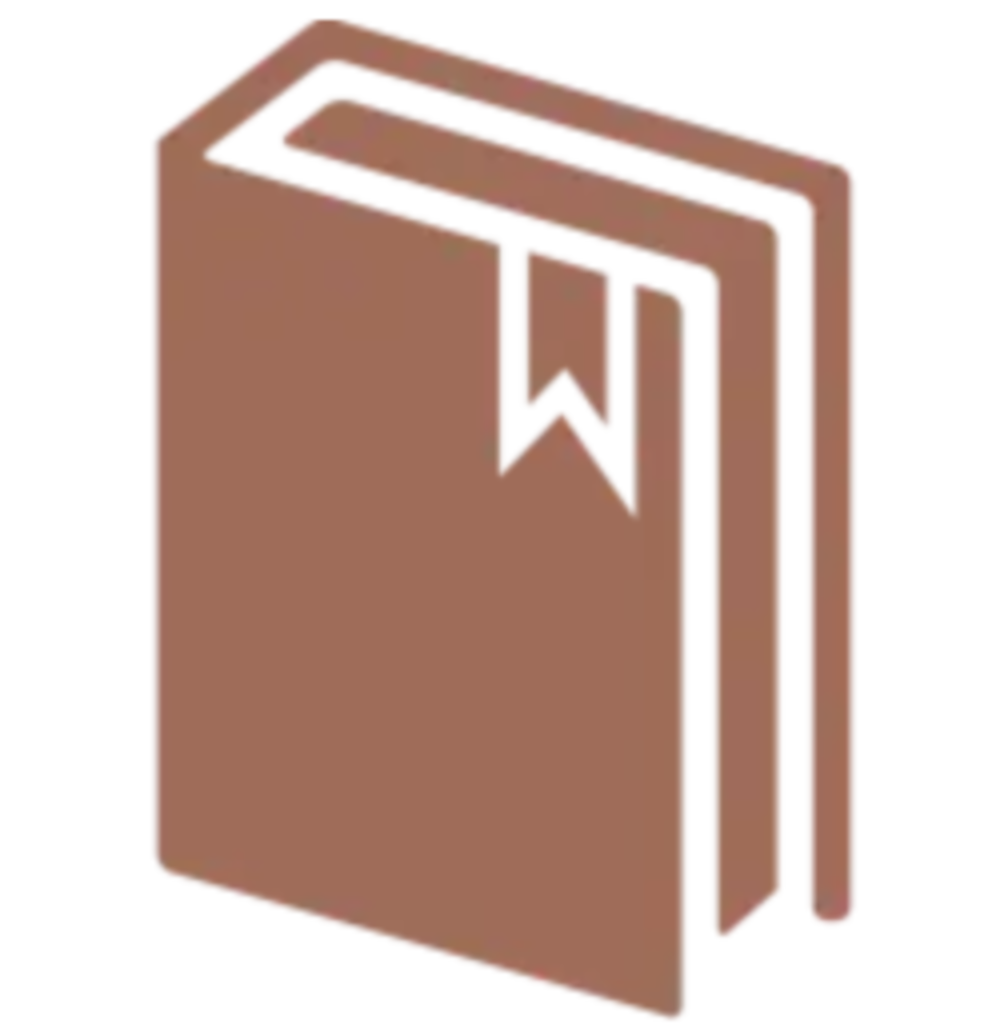- 52 Posts
- 57 Comments

 11·5 months ago
11·5 months agoHelix is a modal text editor, but I haven’t used it as much as I’d like because it lacks the plugins I use in Neovim.

 8·5 months ago
8·5 months agoIndeed, most people I know IRL still use the same passwords for everything.

 01·5 months ago
01·5 months agoAlso, our protesters might get brutalized and slapped with some petty charges. Theirs disappear . After and during which they’re brutalized, too.
And am I supposed to take your word or the one from the BBC for it? Why not link something from a less biased source, like from a country that doesn’t host any US military.

 0·6 months ago
0·6 months agoThe Lemmy community is here not on GitHub, and discussions on GitHub issues without a threaded, tree-like structure suck.

 1·6 months ago
1·6 months agoProblem
Users often have difficulty finding specific posts or content they’ve previously seen on social media platforms. The current tagging/hashtag systems on platforms like Twitter are limited and don’t provide adequate organization and searchability. Additionally, many users want more granular content filtering options beyond just binary NSFW/NSFL flags.
Proposed Solution
Implement a comprehensive, flexible tagging system similar to platforms like Safebooru, with the following functionality:
- Allow users to add multiple tags to posts to categorize content.
- Enable advanced search capabilities to find posts by including/excluding tag combinations (e.g. tag1 AND tag2 but NOT tag3).
- User-controlled blacklists in settings to filter out unwanted content based on tags.
- Provide communities/instances ability to configure tagging permissions (unrestricted, privileged user, or moderator-only tagging).
- Make tags editable by post authors for a set period after posting.
- Allow privileged users/moderators to add new tags and edit/delete existing tags.
- Moderation features like edit history, user trust levels or voting to accept or reject new tags.
Benefits
- Improved content discovery and rediscovery
- Enhanced content organization
- Granular feed customization by including/excluding tags
- Personalized filtering of sensitive/undesirable content
- Community participation in curation process
- Incentives and gamification (e.g. leaderboards for top taggers)
- Tags are non disruptive metadata, hashtags are just spam
Additional Ideas
- User-specific personal tag sets visible only to that user
- Allow following specific tags for notifications
- Mandatory tags (e.g. SFW/NSFW) configured per community/instance
- Tag synonym support to consolidate similar tags
- Autocomplete suggestions when adding tags
- Track percentage of user’s liked posts per tag in user stats
- Use tag percentages for user affinity matching
Implementation
- New tags database table(s) to store tags, names, descriptions, languages
- API endpoints for CRUD operations on tags
- UI components for adding/editing tags on posts
- Search functionality to query posts by tag combinations
- User settings for tag blacklists/filtering
- Trust system and edit history for moderation
- Optional gamification with leaderboards
The proposed tagging system aims to vastly improve content organization, discovery, and personalized filtering capabilities compared to basic hashtags or binary flags. It provides flexibility for communities to tailor permissions while empowering users to curate their experience.

 1·6 months ago
1·6 months agoAll I know about it is that Mastodon offers this feature and is one that users have requested in a few very popular issues.

 1·6 months ago
1·6 months ago

 1·6 months ago
1·6 months agoFederating communities is a manual process so in smaller instances you don’t see as much content as in larger ones since there aren’t many users subscribing to external communities.

 2·6 months ago
2·6 months ago- Moving user profile to a new instance #1985: Provide the ability for users to migrate their account and all associated data (posts, comments, moderation actions, saved posts, etc.) from one Lemmy instance to another. This would allow users to move freely between instances without losing their online identity, history, and credibility built up over time on a previous instance.
It’s crazy when I see this super popular issues closed without completion by the main devs. It makes me feel like they don’t care at all about user feedback.

 1·6 months ago
1·6 months agoNice! What made you decide to write it? Where can I find out which instances offer that UI?

 0·6 months ago
0·6 months agoI stopped using Lemmy due to instances blocking each other. I wanted to view content from specific instances, but none of the instances between the most popular ones allowed me to see all the content. I had to create multiple accounts, which made navigating between them cumbersome. This experience was more frustrating for me than any issues I’ve encountered on Reddit. I believe users should have more freedom to choose the content they see without having to create their own instance or manage multiple accounts. I was hopeful that this would change with user instance blocking implementation, but I feel validated in my decision after seeing that it hasn’t.
 1·7 months ago
1·7 months agoThe error messages you’re receiving indicate that the NTFS file system on the drive has become corrupted, and the master file table (MFT) – which is a critical component that stores metadata about files and directories – is damaged. Unfortunately, when the MFT is severely corrupted, Windows’ built-in
chkdskutility is often unable to repair it.However, there are third-party data recovery tools that may be able to recover your files from the corrupted NTFS drive. These tools use advanced algorithms and techniques to scan the drive sector by sector, searching for file signatures and reconstructing the file system structure.
Here are a few recommended data recovery tools you could try:
-
TestDisk and PhotoRec (Free, open-source): TestDisk is a powerful tool that can attempt to repair damaged file systems, including NTFS. If it fails to repair the file system, you can use its companion tool PhotoRec to recover files directly from the drive.
-
Stellar Data Recovery (Paid): Stellar Data Recovery is a commercial data recovery suite that includes tools for recovering data from corrupted NTFS drives. It has a solid reputation and decent success rates.
-
EaseUS Data Recovery Wizard (Paid): Another popular commercial data recovery tool that can recover data from corrupted NTFS drives.
-
R-Studio (Paid): A professional-grade data recovery tool that can handle various types of file system corruption and data loss scenarios.
Before using any data recovery tool, it’s crucial to create a byte-by-byte copy (image) of the corrupted drive first. This will ensure that the tool works on a copy rather than the original drive, reducing the risk of further data loss. You can use tools like
ddrescue(Linux/macOS) orImageX(Windows) to create a drive image.Once you have a drive image, you can attempt data recovery using the tool of your choice. Keep in mind that the success rate of data recovery depends on the extent of the corruption and the tool’s capabilities.
-
 2·7 months ago
2·7 months agoThe error message “The disk structure is corrupted and unreadable” indicates that there is a problem with the file system or the disk itself, which is preventing Windows from accessing the drive. The Master File Table (MFT) is a critical component of the NTFS file system, and if it’s corrupt, the system cannot access files on the drive. You’ve already attempted to use the
chkdskutility, which is the right first step, but it has failed to repair the MFT.To recover the files from the drive, you can try the following methods:
Use Data Recovery Software
Since
chkdskwas unable to fix the MFT, you can use data recovery software to try and recover your files. EaseUS Data Recovery Wizard is recommended by one of the sources and is known for its ability to recover data from corrupted drives[2]. Follow these steps:- Download and install EaseUS Data Recovery Wizard.
- Launch the software and select the drive with the corrupted MFT.
- Click “Scan” to start the scanning process.
- Once the scan is complete, preview the recoverable files.
- Select the files you want to recover and save them to a different drive.
Use the FixMbr Command
Another approach is to use the
bootrec.execommand with the/FixMbrparameter to repair the Master Boot Record, which might indirectly help with MFT issues[2]. To do this:- Boot from a Windows installation media.
- Choose “Repair your computer” and then “Command Prompt”.
- Type
bootrec.exe /FixMbrand press Enter.
Format the Drive
If the above methods do not work and you cannot recover your files, the last resort is to format the drive, which will erase all data. Before doing this, ensure that you have recovered as much data as possible using data recovery software. To format the drive:
- Open Disk Management by pressing Windows + X and selecting it from the list.
- Right-click on the drive and select “Format”.
- Choose NTFS as the file system and complete the format process[4].
Additional Tips
- Before attempting recovery, it’s crucial to stop using the drive to avoid overwriting any recoverable data.
- If the drive is an external one, try unplugging and replugging it into a different port or computer to rule out connection issues[1].
- Running hardware and device troubleshooter might help if the issue is related to drivers or hardware[1].
- If you are not comfortable with these steps or if they do not work, consider contacting a professional data recovery service[1].
Remember, these methods are not guaranteed to recover all your data, and there is a risk of data loss. If the data is extremely important, it’s often best to consult with a professional data recovery service before proceeding with any recovery attempts.
Citations: [1] https://www.salvagedata.com/fix-disk-structure-is-corrupted-and-unreadable/ [2] https://www.easeus.com/data-recovery/fix-corrupt-master-file-table-error-without-losing-data.html [3] https://forums.tomshardware.com/threads/master-file-table-corrupt-chkdsk-fails.3712756/ [4] https://www.stellarinfo.com/blog/disk-structure-is-corrupted-and-unreadable/ [5] https://www.partitionwizard.com/disk-recovery/corrupt-master-file-table.html [6] https://www.anyrecover.com/hard-drive-recovery-data/fix-corrupt-master-file-table-error/ [7] https://www.reddit.com/r/datarecovery/comments/fo9o5f/the_disk_structure_is_corrupted_and_unreadable/?rdt=48629 [8] https://recoverit.wondershare.com/file-recovery/fix-corrupt-master-file-table-error.html [9] https://superuser.com/questions/688367/external-hard-disk-is-not-accessible-the-disk-structure-is-corrupted-and-unrea [10] https://answers.microsoft.com/en-us/windows/forum/all/windows-cannot-recover-master-file-table-chkdsk/ecb68215-7329-4006-9f70-2d51f610a27f [11] https://www.youtube.com/watch?v=qKQ5EejHarU [12] https://www.techrepublic.com/forums/discussions/master-file-table-recovery/ [13] https://7datarecovery.com/blog/disk-structure-corrupted-and-unreadable/ [14] https://www.diskpart.com/articles/windows-cannot-recover-master-file-table-0310.html [15] https://www.partitionwizard.com/partitionmagic/disk-structure-corrupt-unreadable.html [16] https://www.stellarinfo.com/blog/fix-corrupt-master-file-table-error/ [17] https://4ddig.tenorshare.com/hard-drive/fix-the-disk-structure-is-corrupted-and-unreadable.html [18] https://7datarecovery.com/blog/corrupt-master-file-table/
Healing Tea Recipe for Cold
Ingredients:
- 1 cup of water
- 1 tea bag (your choice of tea)
- 1 tablespoon of coconut oil
- 1 tablespoon of lemon juice
- 1 teaspoon of honey
- 1/8 teaspoon of ground dried ginger
- A pinch of ground cayenne pepper
- 1 effervescent tablet with vitamin C, vitamin D and zinc, lemon flavor
Instructions:
-
Bring 3/4 cup of water to a boil in a teapot or saucepan.
-
While the water is boiling, prepare a cup for serving the tea.
-
In a separate cup, add the ground dried ginger and a pinch of ground cayenne pepper.
-
Pour the boiling 3/4 cup of water over the tea bag in the serving cup and let it steep for a few minutes.
-
Add one tablespoon of coconut oil and mix well.
-
Add the remaining 1/4 cup of cool water to the tea to bring it to a drinkable temperature.
-
Add one effervescent tablet with vitamin C and zinc, lemon flavor, and let it dissolve completely.
-
Add the tablespoon of lemon juice and the teaspoon of honey. Mix gently to combine.
-
Enjoy your healing tea.
Notes:
- It’s important to add the lemon juice and honey after cooling the tea.
- Adjust the amount of honey and cayenne according to your preferences.
- The tea, ginger, cayenne, and lemon help relieve cold symptoms, while vitamin C and zinc strengthen the immune system. Coconut oil also has antiviral and antibacterial properties.
Get well soon!

 71·9 months ago
71·9 months agoHello fellow pizza enthusiasts!
I wanted to share my pizza making journey with you all, in hopes that it might inspire or help someone who’s just starting out or looking to improve their own pizza game.
I started out making pan pizzas using pizza flour, which is high in yeast and allows for a quick, one-hour dough. The result was a pizza that was pretty tough, not at all the soft, fluffy texture that I like.
After some research and experimentation, I switched to a flour with a higher protein content and reduced the amount of yeast I was using. I also started a 48-hour cold fermentation process. The difference was night and day! My pizzas became much softer and fluffier, a huge improvement over my initial attempts.
I tried my hand at Neapolitan style pizza using a pizza oven, but I found sourcing the right ingredients locally to be a challenge. Plus, the pizza would char if I took my eyes off it for even a second. So, I ended up gravitating towards New York style pizza, which I found to be more forgiving and easier to manage.
One thing that has remained constant throughout my pizza making journey is my sauce. I prefer a cooked sauce over the often-recommended raw tomato sauce. I cook mine with garlic, olive oil, dried oregano, dried basil, powdered onion, and bicarbonate. The canned tomatoes that I use contain salt and citric acid, which is why I use sodium bicarbonate instead of salt, to counter the acid. The result is a rich, flavorful sauce that really elevates the pizza.
There are a few resources that have been instrumental in my pizza making journey:
- Pizza: Neapolitan vs. New York style - Enzo Coccia and Tony Gemignani — Italia Squisita
- Pizza napoletana fatta in casa: la ricetta di Davide Civitiello — Italia Squisita
- Impasto pizza a lunga maturazione. ALLE PIZZA — Alessandro Coluccino
- The Pizza Bible: The World’s Favorite Pizza Styles, from Neapolitan, Deep-Dish, Wood-Fired, Sicilian, Calzones and Focaccia to New York, New Haven, Detroit, and More Hardcover by Tony Gemignani
I hope my journey and these resources can help you on your own pizza making journey. Happy baking!

 4·9 months ago
4·9 months agoJust don’t post about it in the fediverse community. Damn hypocrites.

 73·10 months ago
73·10 months agoMaking movies from a single prompt.





.